

We may earn revenue from the products available on this page and participate in affiliate programs. Learn More ›
Looking for ways to keep your garden low maintenance while also enjoying a multitude of beauty, culinary, and medicinal benefits? Growing perennial herbs in your garden may be just the ticket.
Unlike basil, an annual, and parsley, a biennial that may survive for two years, perennial herbs are plants that can survive for at least two growing seasons. They typically die back in the winter but return refreshed and lush. Although perennials still need pruning and weeding, they are much easier to care for than annuals.
If you want to plant some year-round herbs alongside your perennial vegetables, then check out the list below—and double-check that the variety you select is hardy in your growing zone. Read on to learn about these perennial herbs’ benefits, best growing conditions (including soil type), and more.
RELATED: 7 Important Things to Know About Growing Herbs Outdoors
1. Lavender (Lavandula angustifolia)
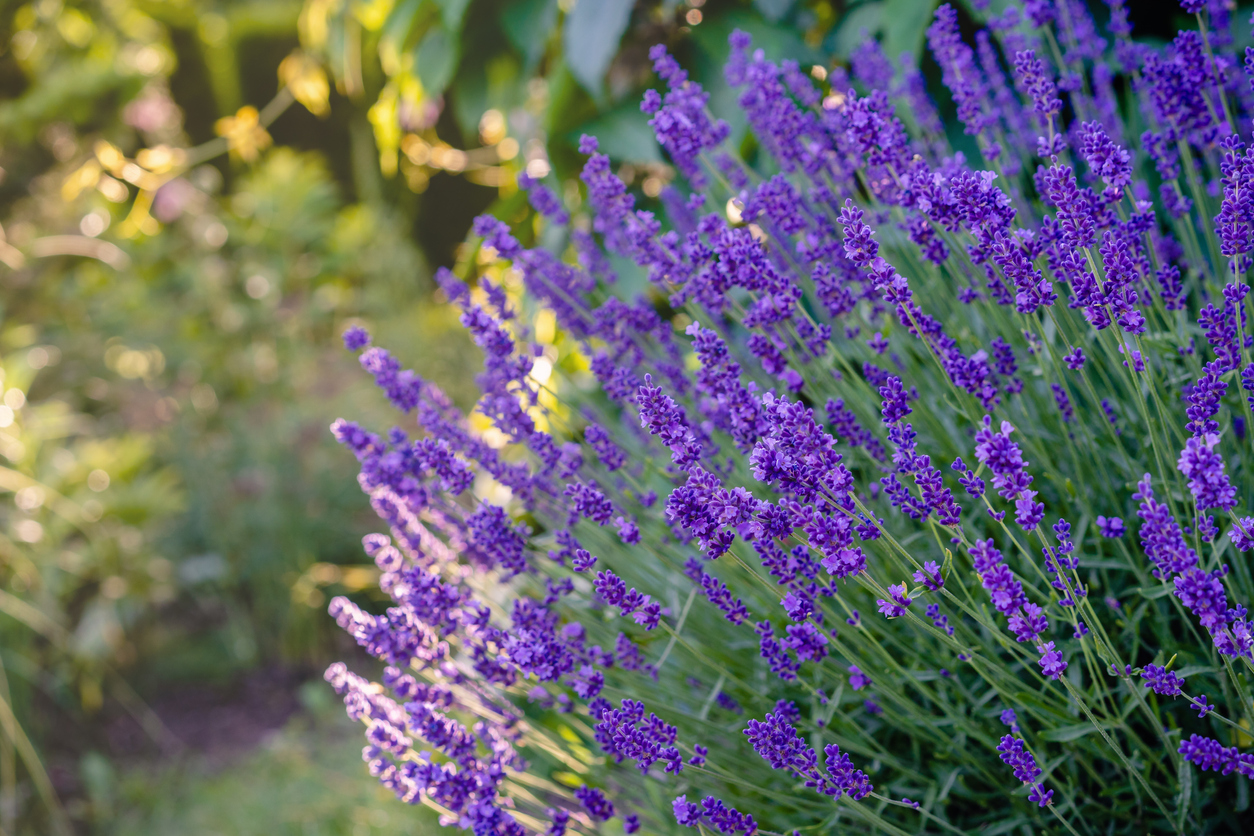
Known for its calming effects, lavender is a bushy perennial with vivid purple flowers and a strong fragrance. The oil from the plant serves as a disinfectant and deodorizer. It also has medicinal value, helping with stress relief. Lavender attracts bees and butterflies, while its oil repels mosquitoes. There are several varieties, but all thrive in full sun and somewhat dry soil.
Lavender plants can look their best planted along a walkway where they get at least 6 to 8 hours of sunlight daily. It is not easy to grow lavender from seed, so use starter plants instead.
2. Rosemary (Salvia rosmarinus)
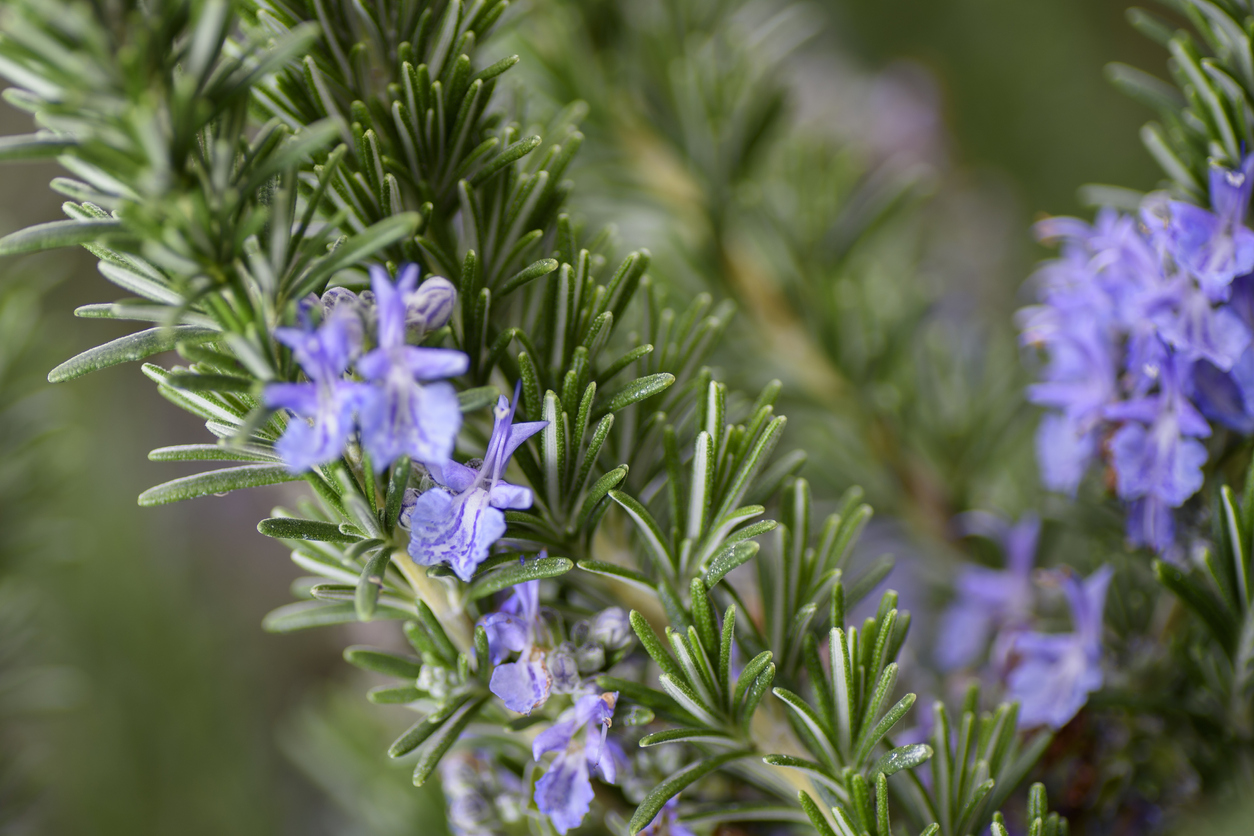
Rosemary is a woody evergreen perennial herb with blue and purple flowers and a sweet aroma. It is commonly used as a seasoning for poultry, lamb, stews, and soups, but you can also pick extra to make a natural all-purpose cleaning spray thanks to its mild disinfectant properties. Rosemary is even believed to repel mosquitoes!
The herb thrives in warm areas, full sun, and sandy soil that drains quickly, although many varieties can survive winter in various regions. Because it can grow to heights of several feet, prune rosemary regularly.
3. Tarragon (Artemisia dracunculus)
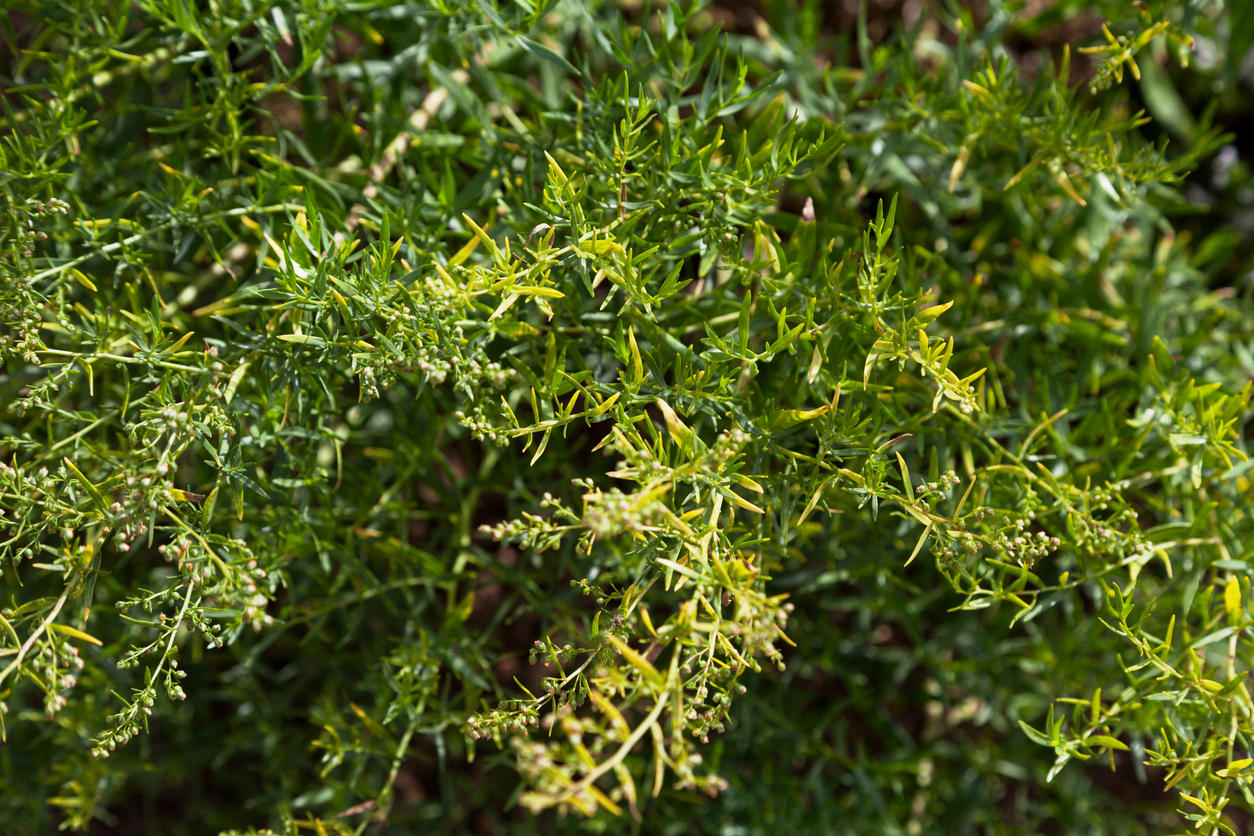
Known for its use in the kitchen, tarragon has long light-green leaves and small greenish (or yellowish) white flowers. When harvested, this culinary herb goes well with meats, poultry, and seafood. It can’t be grown from seed, so you will need to use a starter plant.
Tarragon is a perfect companion plant for most vegetables in the garden. Prune it regularly to prevent flowering and to keep its height to around 2 feet; otherwise, it could fall over without support.
4. Lemon balm (Melissa officinalis)
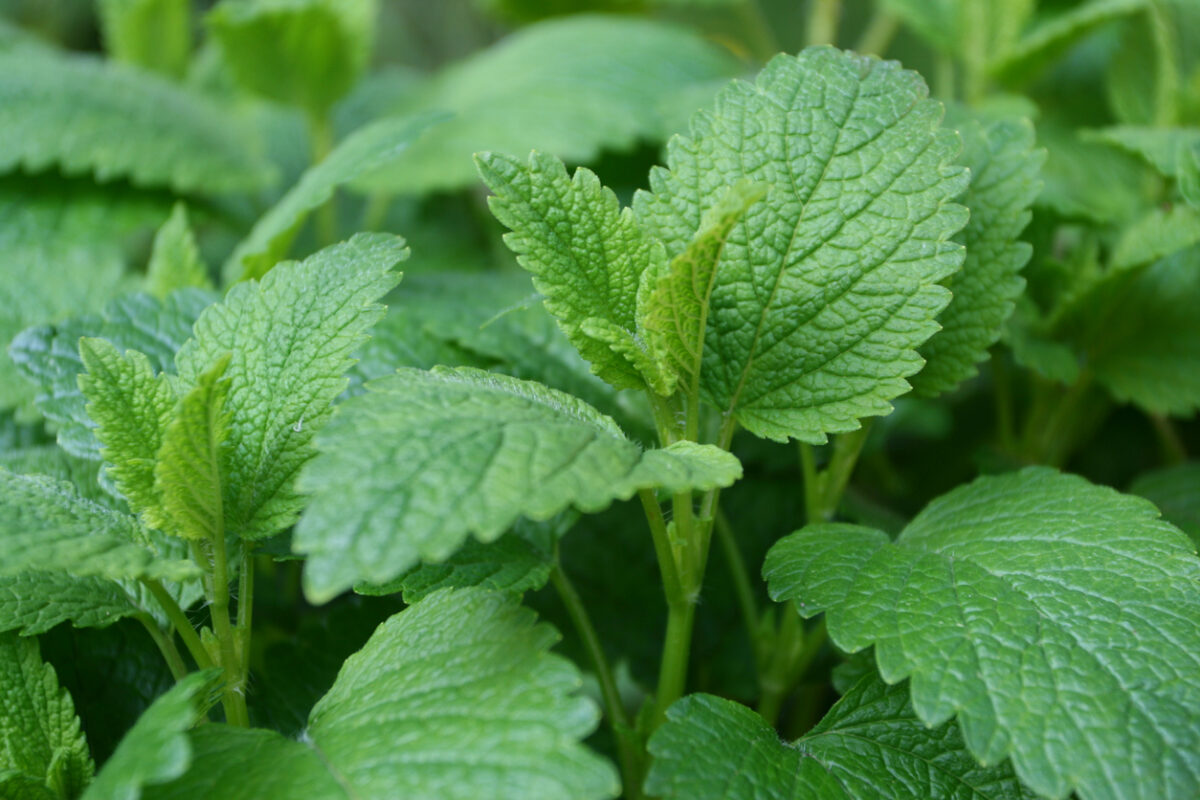
Related to mint, lemon balm is typically grown for its refreshing lemony scent, which is believed to deter mosquitoes. It is also known for its serrated heart-shaped leaves and small blue, yellow, or white flowers. Lemon balm leaves can be dried and brewed into a wonderfully lemon-tasting herbal tea that helps induce sleep. This flowering herb is best grown in temperate regions in a partially shaded spot with moist (but not soggy) soil.
5. Thyme (Thymus vulgaris)
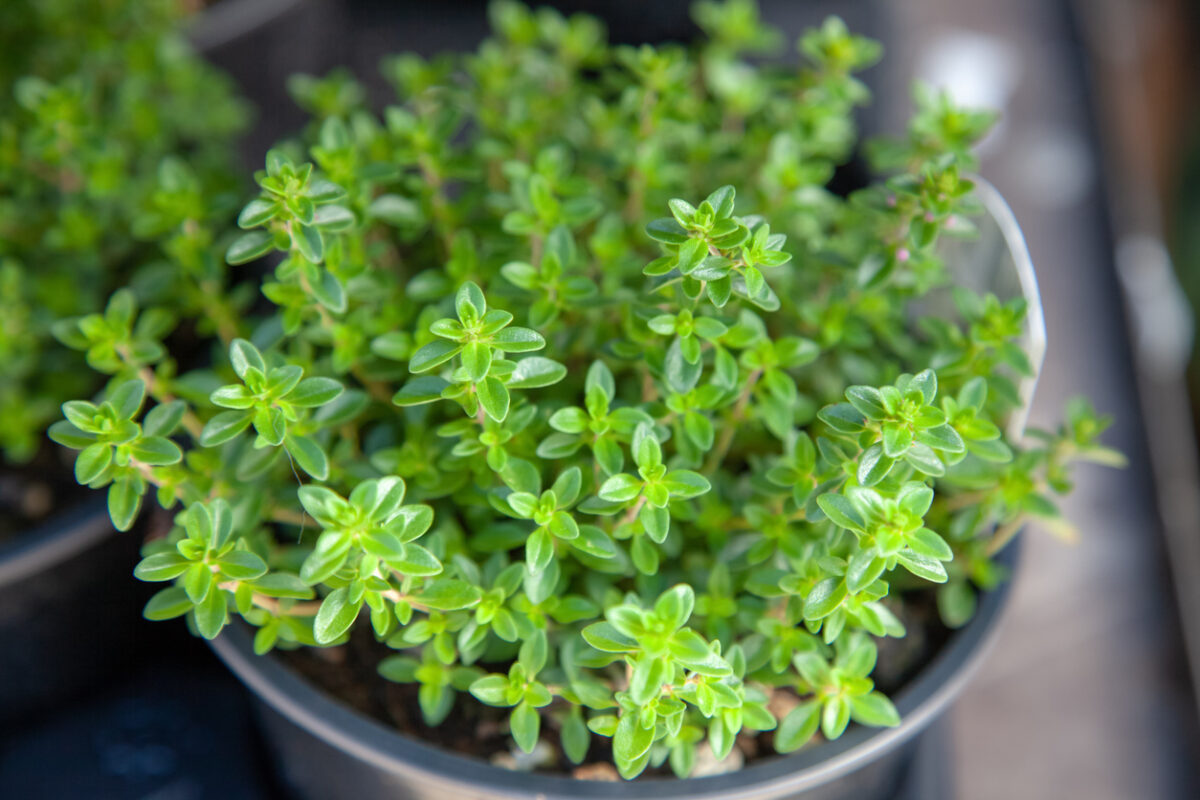
Thyme is widely used as a savory seasoning for soups, meats, and vegetables. Considered a low-growing perennial, it has small leaves and thin, woody stems and a pleasant clover-like flavor. Thyme comes in more than 50 varieties; the most common are French and English thyme, lemon thyme, and caraway thyme.
Thyme thrives in full sun and is drought-friendly, so it does not need to be watered often. Even better, this perennial herb is also pollinator-friendly.
RELATED: So, You Want to… Plant an Herb Spiral Garden
6. Roman chamomile (Chamaemelum nobile)

Roman chamomile contains the essential oil chamazulene and has small, daisy-like flowers with a sweet, apple-like scent. It has been used in herbal remedies for thousands of years as a mild sedative, antiseptic, and anti-inflammatory. Today, it’s best known for its use as a calming tea. Fond gardeners also tout chamomile as an effective natural insect repellent, keeping garden pests away while attracting pollinators.
The herb grows quickly, reaching full bloom by 10 weeks. It is best planted in the spring, either from seed or young plants, and is often used as a ground cover. Chamomile is an excellent companion plant for fruits and vegetables.
7. Chives (Allium schoenoprasum)
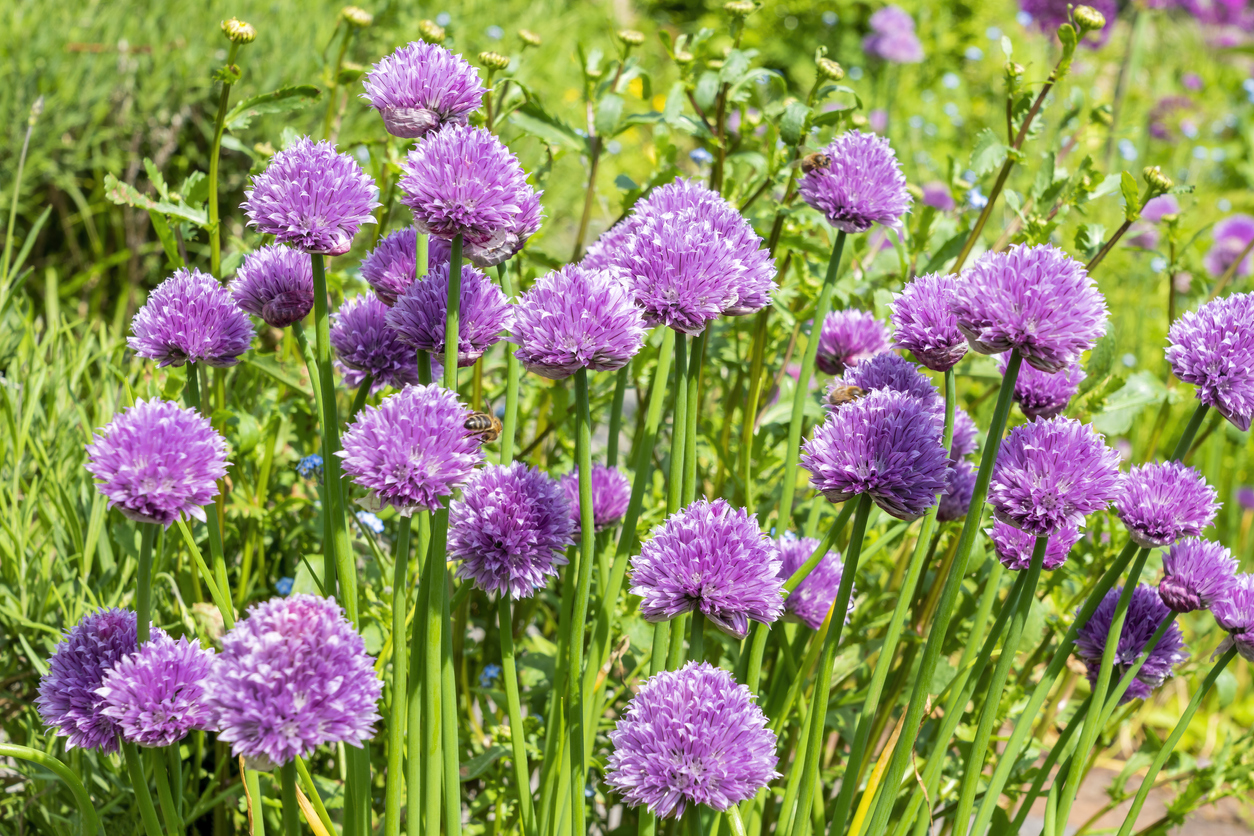
Chives have attractive edible flowers and are part of the onion family. They are a common herb in the kitchen; their green stalks are an ingredient in many dishes, and the flowers are used in salads. In addition to insect-repelling properties, chive flowers also provide nectar for pollinators.
Chives are cool-season, cold-tolerant herbs best planted in early to mid-spring for an early summer harvest. They grow in full sun, but they also tolerate light shade. Soil should be moist, fertile, and well-draining.
8. Oregano (Origanum vulgare)
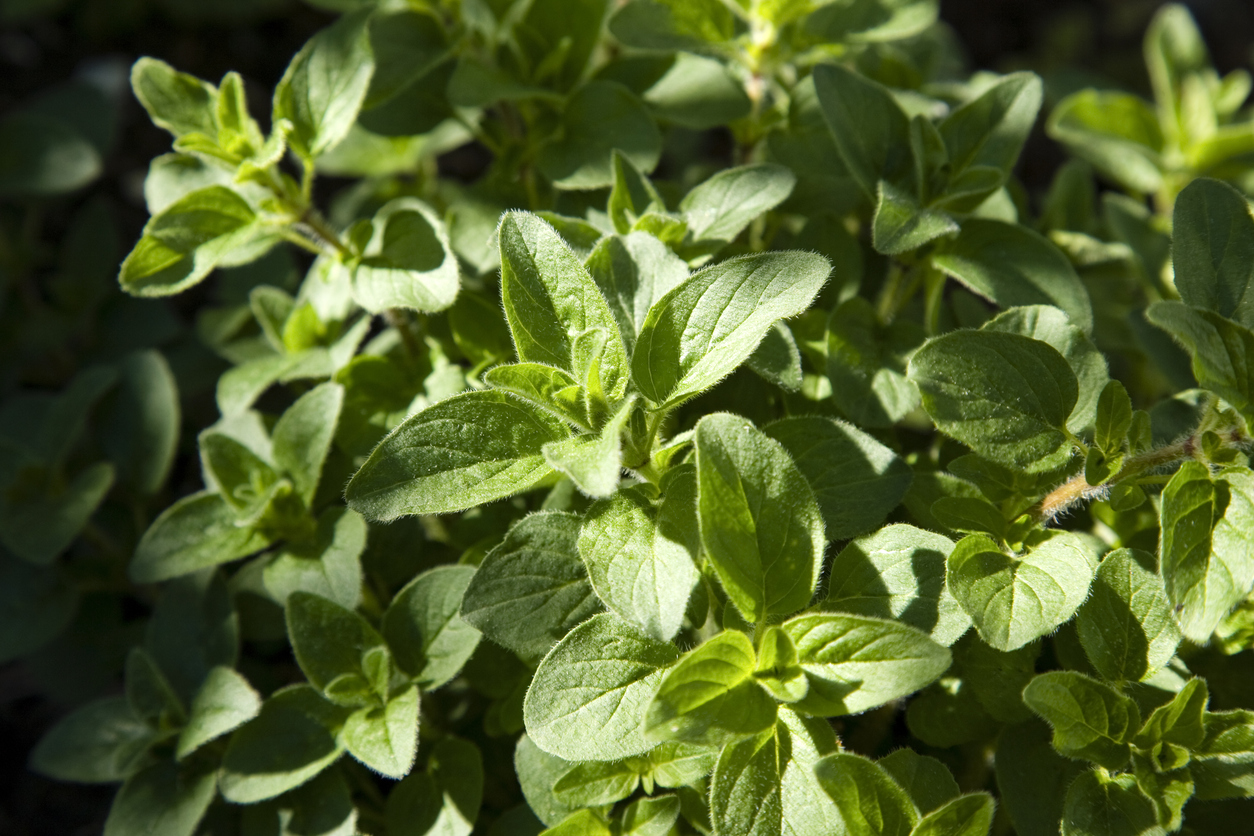
Oregano is a low-growing, woody, deciduous perennial most people know for its use in the kitchen, especially for Italian dishes. However, oregano essential oil is also recognized as a strong antimicrobial used for medicinal and cleaning purposes.
When growing oregano in your garden, be careful when pruning the herbs. If you prune too much, the stems might grow back long, thin, and weak. But if you don’t prune them at all, they become woody. Throughout the growing season, harvest 2- to 3-inch stem tips as needed for your recipes.
9. Peppermint (Mentha × piperita)

If you are looking for insect-repellent herbs to add to your garden, try peppermint, which can even mosquito-proof your garden in its essential oil form. This versatile perennial herb also has many culinary uses: Dry peppermint leaves for tea, drop fresh leaves into lemonade or cocktails, and shred the leaves for fruit or vegetable salads and some Asian dishes.
Peppermint can be an invasive plant, so corral it in a container and set it in a partially shaded spot for a potted perennial. Be sure to water regularly so the soil won’t dry out.
10. Fairy wand (Chamaelirium luteum)

Also known as angel’s fishing rod, blazing star, devil’s bit, and false unicorn, fairy wand is a perennial herb with arching spikes of tiny, densely packed white or pink flowers. It is used in traditional medicine for female reproductive health treatment. Fairy wand thrives in temperate regions, is tolerant of drought conditions, and can be started from seed.
11. Lemongrass (Cymbopogon citratus)
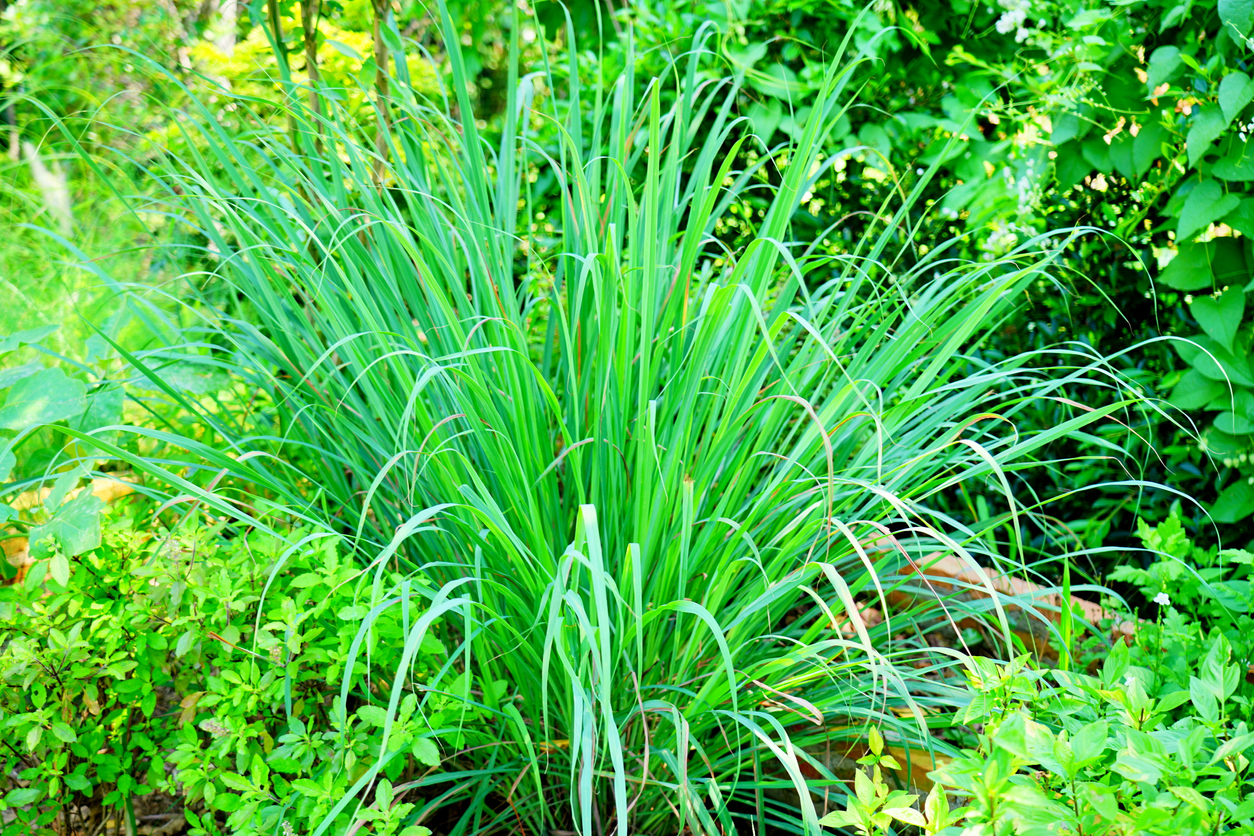
Popular in Asian cuisine, lemongrass looks like a tall clump of grass and has a strong lemon fragrance and taste. The strong scent of lemongrass oil also helps keep away mosquitoes.
Lemongrass is a tender perennial, which means it comes back every year with proper care and under the right conditions. It flourishes in warm, full-sun areas with moist soil. Although only cold hardy in warm regions (USDA Zones 9 and 10), lemongrass can be taken indoors during winter in other regions.
12. Anise hyssop (Agastache foeniculum)

Looking for unique herbs to grow? Try anise hyssop, a member of the mint family with beautiful lavender blossoms. Interestingly, it is not an anise seed producer, a hyssop, nor a blend of the two.
Anise hyssop plants love sun, and their leaves have a mild minty-licorice flavor used in some salads and vegetable dishes. Additionally, fresh or dried anise hyssop leaves can be made into tea. The plant also is used to add fragrance to soaps and cosmetics.
13. Epazote (Dysphania ambrosioides)
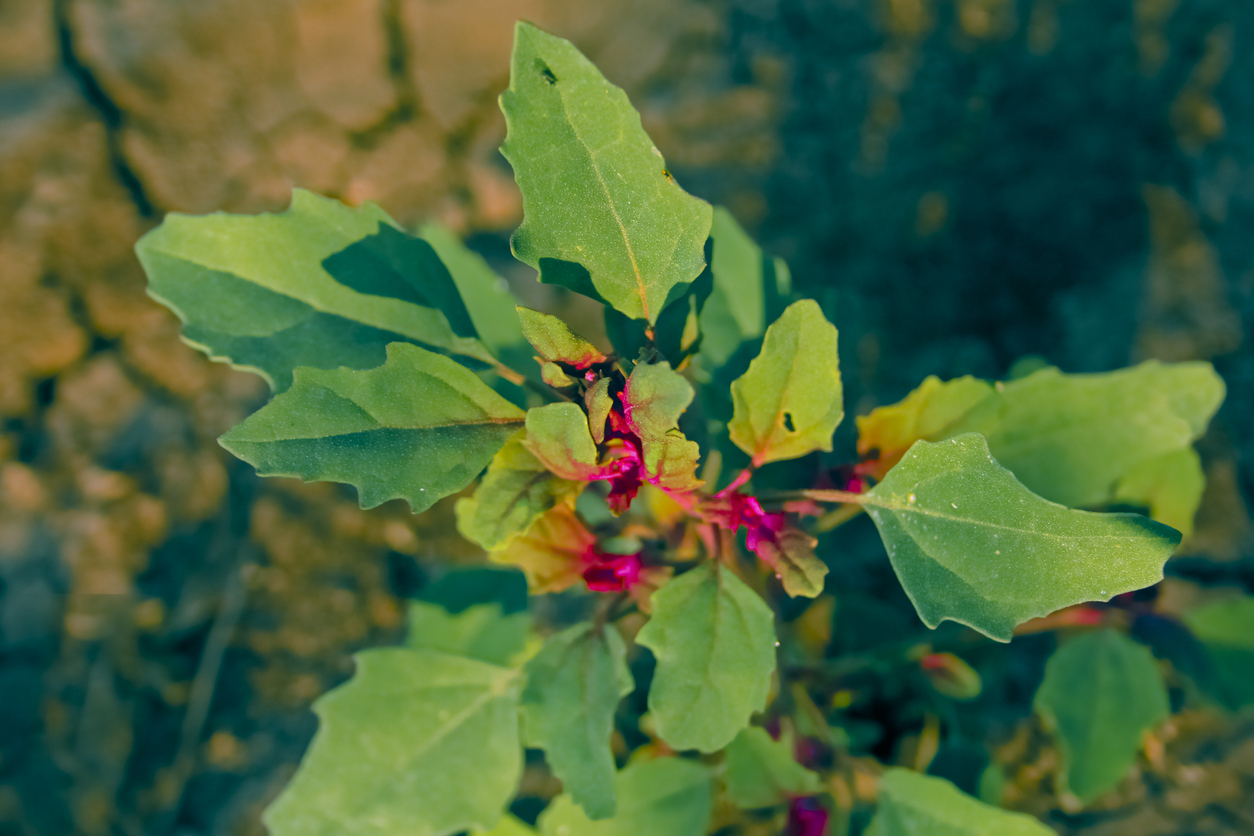
Known for its pungent flavor, epazote is often used in Mexican dishes and traditional medicine. It is believed to help with digestion, stomach cramps, gas, and bloating. However, do not consume epazote in large quantities, since the flowers and seeds can cause nausea and convulsions when eaten in excess.
Epazote is a perennial in warm, tropical areas. Plant seeds or seedlings in early spring. Because of its invasive nature, however, it is best grown in containers.
14. Lovage (Levisticum officinale)
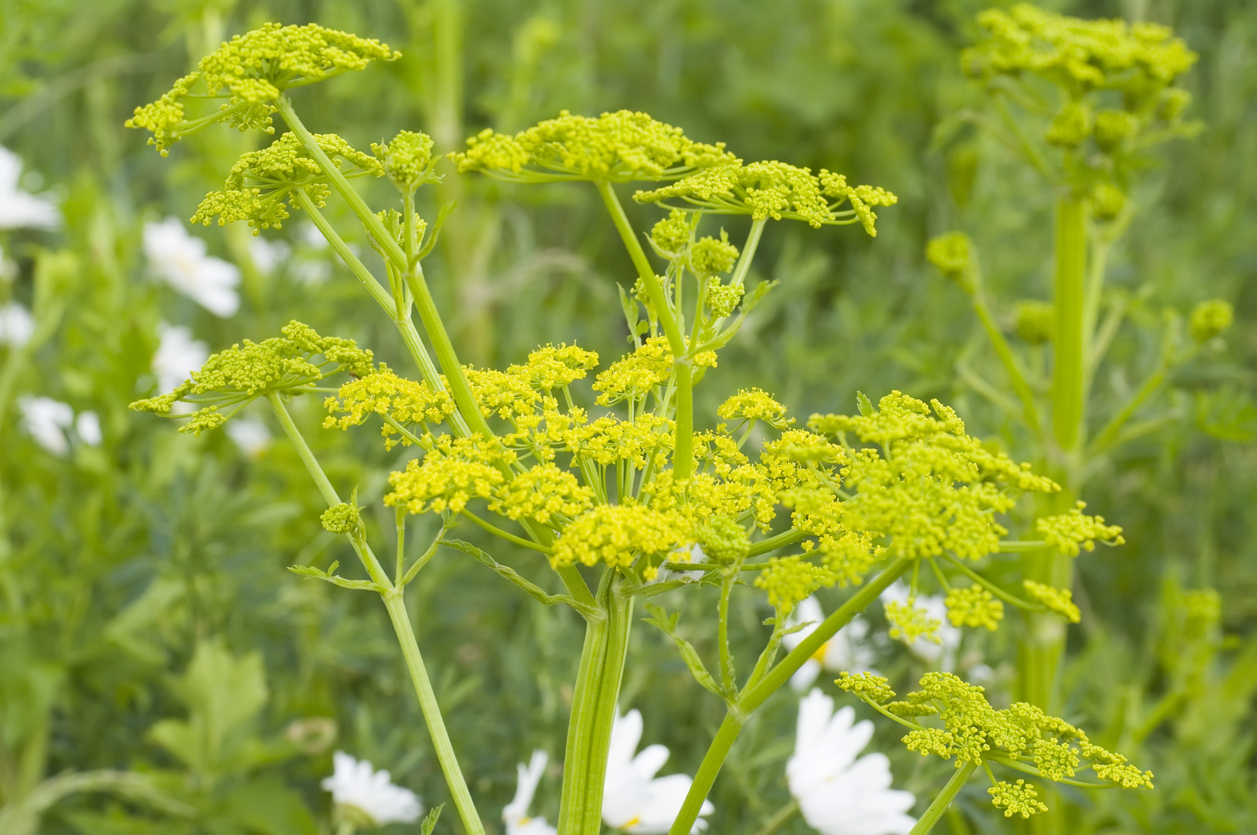
If you have not heard of lovage, many regard it as a versatile herb garden inclusion, with both culinary and medicinal benefits. The entire plant is edible and has a bright, fresh flavor similar to celery. The leaves can be added to salads or used in place of parsley, while ovage seeds (ironically known as celery seeds) are used to flavor marinades, soups, chilis, and dips.
A lovage plant can grow 6 feet tall, and its dark-green, frilly leaves and bright-yellow flowers are a lovely addition to any garden. It prefers full sun exposure in a cool climate and sandy, loamy soil that drains well.
15. French sorrel (Rumex scutatus)

French sorrel is a perennial herb with bright-green spear-shaped leaves that grow 6 to 12 inches long. The leaves are used similarly to spinach in dishes calling for an acidic, citrusy flavor. You can cut french sorrel leaves at any time and more will grow. The small leaves on these herbs are the most tender and flavorful. French sorrel is also used homeopathically as an anti-inflammatory to treat chronic pain. It grows best in deep containers in which the soil can dry out slightly between waterings.
